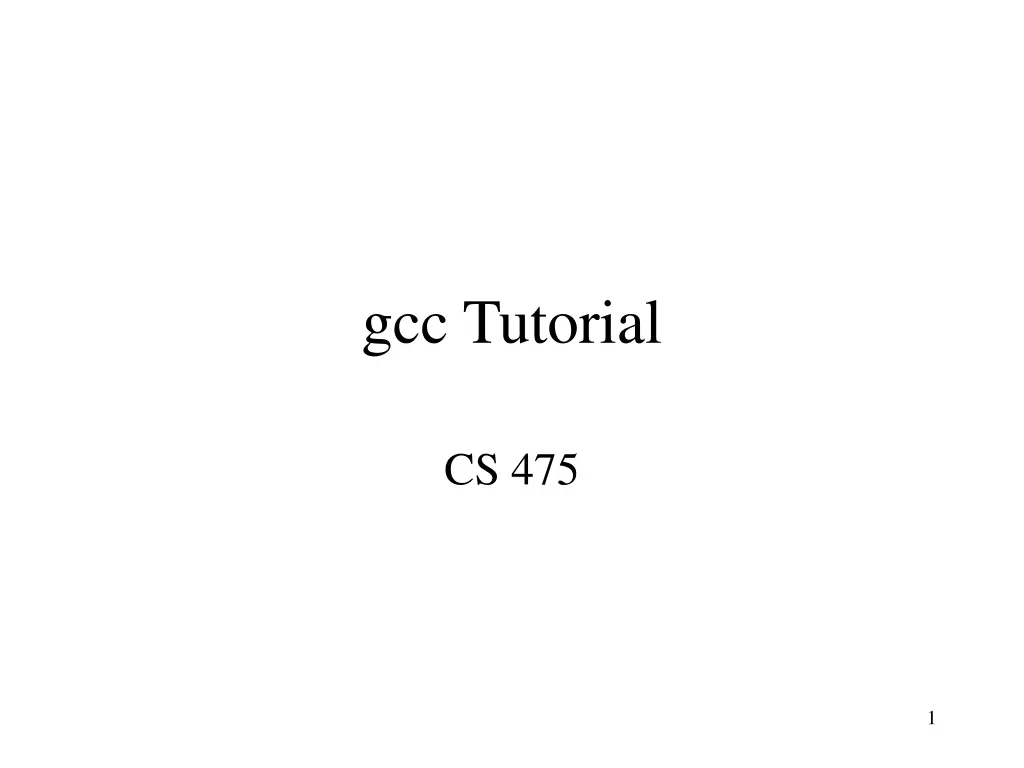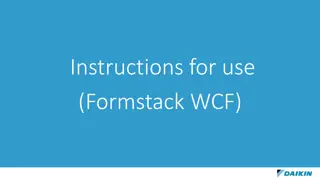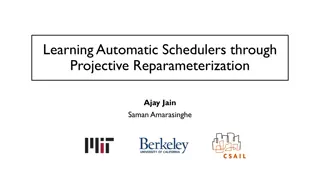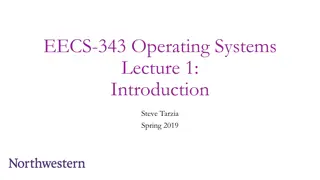
Understanding the Basics of Compilers and Interpreters in Programming
Dive into the fundamental concepts of compilers and interpreters in programming, including how a program works, different computer languages, compiling vs interpreting, and the role of GCC in C/C++ programming. Explore the fetch-decode-execute cycle, machine languages, assembly language, high-level languages, and more.
Download Presentation

Please find below an Image/Link to download the presentation.
The content on the website is provided AS IS for your information and personal use only. It may not be sold, licensed, or shared on other websites without obtaining consent from the author. If you encounter any issues during the download, it is possible that the publisher has removed the file from their server.
You are allowed to download the files provided on this website for personal or commercial use, subject to the condition that they are used lawfully. All files are the property of their respective owners.
The content on the website is provided AS IS for your information and personal use only. It may not be sold, licensed, or shared on other websites without obtaining consent from the author.
E N D
Presentation Transcript
gcc Tutorial CS 475 1
Contents Intro Options Examples 2
How a Program Works (contd.) Program must be copied from secondary (e.g. HDD) memory to main memory (RAM) each time CPU executes it CPU executes program in cycle: Fetch: read the next instruction from memory into CPU Decode: CPU decodes fetched instruction to determine which operation to perform Execute: perform the operation Figure 1-17 The fetch-decode-execute cycle
Computer Languages Impractical for people to write in machine language Assembly language: uses short words (mnemonics) for instructions instead of binary numbers Easier for programmers to work with Assembler: translates assembly language to machine language for execution by CPU Low-level language: close in nature to machine language Example: assembly language High-Level language: allows simple creation of powerful and complex programs No need to know how CPU works or write large number of instructions More intuitive to understand
Compilers and Interpreters Source code: statements written by programmer Syntax error: prevents code from being translated Programs written in high-level languages must be translated into machine language to be executed Compiler: translates high-level language program into separate machine language program Machine language program can be executed at any time Interpreter: translates and executes instructions in high-level language program Used by Python language, Interprets one instruction at a time, No separate machine language program Executing a high-level program with an interpreter
Compiling and interpreting Many languages require you to compile (translate) your program into a form that the machine understands. compile (i.e javac OR gcj) execute (i.e. java) source code Hello.java byte code Hello.class output Python is instead directly interpreted into machine instructions. interpret (python) source code Hello.py output 6
What is gcc? gcc GNU C/C++ Compiler Console-based compiler for Unix/Linux based platforms and others; can cross-compile code for various architectures gcc for C; g++ for C++ gcc performs all of these: preprocessing compilation assembly and linking As always: there is $ man gcc 7
Dynamic linking within Linux Web: Anatomy of Linux dynamic libraries
gcc Options There are zillions of them, but there are some the most often used ones: To compile: -c Specify output filename: -o <filename> Include debugging symbols: -g GDB friendly output: -ggdb Show all (most) warnings: -Wall Be stubborn about standards: -ansi and -pedantic Optimizations: -O, -O* 9
Options: -c gcc c : performs compilation and assembly of the source file without linking. The output are usually object code files, *.o; they can later be linked and form the desired executables. Generates one object file per source file keeping the same prefix ( before . ) of the filename. 10
Options: -o <filename> gcc o : Places resulting file into the filename specified instead of the default one; what is the name of this default ? Can be used with any generated files object, executables, assembly, etc. If you have the file called source.c; the defaults are: source.o if -c was specified a.out if executable These can be overridden with the -o option. 11
Options: -g gcc g : Includes debugging info in the generated object code. This info can later be used in gdb. gcc allows to use -g with the optimization turned on (-O) in case there is a need to debug or trace the optimized code. 12
Options: -ggdb gcc ggdb : In addition to -g produces the most GDB- friendly output if enabled. 13
Options: -Wall gcc Wall : Shows most of the warnings related to possibly incorrect code. -Wall is a combination of a large common set of the -W options together. These typically include: unused variables possibly uninitialized variables when in use for the first time defaulting return types missing braces and parentheses in certain context that make it ambiguous Always a recommended option to save you from some hidden bugs. Try always using it and avoid having those warnings 14
Options: -ansi and -pedantic For those who are picky about standard compliance. -ansi ensures that the code complies with ANSI C standard; -pedantic makes it even more strict. These options can be quite annoying for those who don t know C well since gcc will refuse to compile any code that does not follow the ANSI C standard, which otherwise it has no problems with. 15
Options: -O, -O1, -O2, -O3, -O0, -Os Various levels of optimization of the code -O1 to -O3 are various degrees of optimization targeted for speed (performance) If -O is added, then the code size is considered -O0 means no optimization -Os targets generated code size forces not to use optimizations resulting in bigger code. 16
Options: -I Tells gcc where to look for include files (.h). Can be any number of these. Usually needed when including headers from various-depth directories in non-standard places without necessity specifying these directories within the .c files themselves, e.g.: #include myheader.h vs. #include ../foo/bar/myheader.h 17
For Your Assignments For your assignments, I d strongly suggest to always include -Wall and -g. Optionally, you can try to use -ansi and pedantic, which is a bonus thing towards your grade. Do not use any optimization options. You won t need probably the rest as well. 18
Example (1) For example, if you have the following source files in some project of yours: ccountln.h ccountln.c fileops.h fileops.c process.h process.c parser.h parser.c You could compile every C file and then link the objet files generated, or use a single command for the entire thing. This becomes unfriendly when the number of files increases; hence, use Makefiles! NOTE: you don t NEED to compile .h files explicitly. 19
Example (2) One by one: gcc -g -Wall -ansi -pedantic -c ccountln.c gcc -g -Wall -ansi -pedantic -c parser.c gcc -g -Wall -ansi -pedantic -c fileops.c gcc -g -Wall -ansi -pedantic -c process.c This will give you four object files that you need to link and produce an executable: gcc ccountln.o parser.o fileops.o process.o -o ccountln 20
Example (3) You can do this as well: gcc -g -Wall -ansi -pedantic ccountln.c parser.c fileops.c process.c -o ccountln Instead of typing this all on a command line, again: use a Makefile. 21
Example (4) # Simple Makefile with use of gcc could look like this CC=gcc CFLAGS=-g -Wall -ansi -pedantic OBJ:=ccountln.o parser.o process.o fileops.o EXE=ccountln all: $(EXE) $(EXE): $(OBJ) $(CC) $(OBJ) -o $(EXE) ccountln.o: ccountln.h ccountln.c $(CC) $(CFLAGS) -c ccountln.c ... 22






















